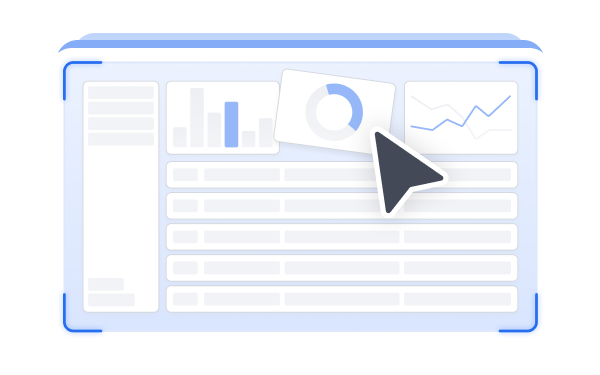The midstream segment of the oil and gas industry (responsible for the transportation, storage, and wholesale marketing of crude and refined petroleum products) is undergoing a digital renaissance.
With volatile markets, regulatory pressures, and evolving operational complexities, software solutions are no longer optional; they are essential. As we look to 2025, midstream operators face both challenges and opportunities in adopting technologies that can drive efficiency, safety, and profitability.
This post explores the top midstream software trends in 2025, including the shift from legacy systems to modern, integrated platforms, the rise of AI/ML-powered analytics, and how operators can strategically evaluate software investments in an increasingly digital landscape.
#The Evolution of Midstream Software: From Legacy to Modern Platforms
Historically, midstream oil and gas companies relied heavily on legacy systems built decades ago; monolithic applications that were often siloed and difficult to scale or integrate. These systems lacked the agility to respond to real-time operational needs or support advanced analytics.
Fast-forward to 2025, and the transformation is unmistakable. Integrated midstream platforms (cloud-native, modular, and scalable) are now at the core of operational modernization.
These platforms consolidate functionality across SCADA systems, pipeline integrity management, asset monitoring, commercial scheduling, and compliance reporting. This evolution reflects a broader industry demand for agility, data integration, and reduced IT overhead.
The modernization trend also extends to user interfaces and workflows. Many vendors have reimagined their platforms with intuitive dashboards, mobile compatibility, and role-based access, allowing for more dynamic, collaborative, and secure operations.
#Growth of Integrated, Cloud-Based Solutions
One of the defining midstream software trends for 2025 is the accelerated adoption of cloud-based integrated platforms. Cloud infrastructure allows companies to centralize data, scale operations without heavy upfront investments, and reduce dependence on physical data centers.
Operators are increasingly investing in hybrid and multi-cloud environments to manage compliance, data sovereignty, and redundancy. This is especially important in a sector where uptime, resilience, and data accuracy are non-negotiable.
The benefits of cloud-based platforms extend beyond cost efficiency:
Real-time collaboration between field and office teams
Rapid deployment and updates without downtime
Enhanced cybersecurity through modern encryption and monitoring protocols
Improved disaster recovery through distributed data backups
These capabilities are enabling operators to become more agile in their decision-making and better positioned to meet the growing expectations of regulators, partners, and shareholders.
#Key Trends Defining Midstream Software in 2025
AI/ML Integration for Operational Insights
Perhaps the most transformative trend is the increasing use of AI in midstream software. Artificial intelligence and machine learning (AI/ML) are being embedded into platforms to enable everything from pipeline leak detection to predictive maintenance and throughput optimization.
AI algorithms can analyze historical and real-time sensor data to:
Predict pipeline corrosion risks
Optimize compressor station operations
Forecast product demand and capacity constraints
Detect anomalies and flag them before failure occurs
As the industry continues to collect vast amounts of IoT and sensor data, AI will play a pivotal role in turning data into action, empowering control room operators and engineers with timely, data-driven recommendations.
Predictive Analytics and Operational Intelligence
Beyond AI, predictive analytics are becoming standard features within integrated midstream platforms. By combining historical performance data, real-time telemetry, and environmental variables, operators can better plan:
Pipeline maintenance windows
Product allocation and dispatch
Emergency response strategies
These capabilities are crucial for cost control, regulatory compliance, and reducing unplanned downtime. Predictive models also allow midstream companies to simulate future scenarios, helping them better prepare for weather events, market shifts, or geopolitical disruptions.
SaaS Adoption
Another significant shift is the move from on-premise systems to Software as a Service (SaaS). Midstream operators are increasingly opting for SaaS delivery models that offer:
Lower total cost of ownership (TCO)
Subscription-based pricing
Always-current software with automated updates
Faster onboarding and user adoption
SaaS models also facilitate continuous innovation. Vendors can roll out new features and capabilities incrementally, ensuring customers always have access to the latest tools without disruptive upgrades.
#Shift Toward Real-Time Data Platforms
In 2025, real-time data platforms are no longer futuristic; they are foundational. The ability to gather, process, and visualize live data from remote assets is transforming how operators manage infrastructure, safety, and logistics.
Real-time data streaming supports:
Live monitoring of pipeline pressure and flow
Automated alarms for safety and compliance triggers
Dynamic rerouting during outages or bottlenecks
Real-time commercial nominations and scheduling
Midstream companies that harness real-time operational data gain a competitive edge in reducing downtime, ensuring product quality, and improving customer satisfaction.
Moreover, with the increased use of edge computing, data can now be processed closer to the source, reducing latency and improving system responsiveness.
#Software’s Role in Digital Twin Adoption and Simulation Modeling
The rise of digital twins (virtual replicas of physical systems) is another game-changer in the midstream sector. In 2025, more companies will use digital twins to simulate:
Pipeline flow dynamics
Pump station performance
Environmental impacts and risk scenarios
By integrating simulation modeling into their software ecosystems, midstream operators can:
Test changes before implementation
Forecast asset wear and degradation
Conduct virtual training exercises
Improve emergency preparedness
These models rely heavily on high-fidelity data from sensors and SCADA systems. Therefore, the accuracy of a digital twin is directly linked to the quality of the underlying software platform and its ability to manage real-time, high-volume data.
#Recommendations for Evaluating New Software Investments in 2025
With so many choices and emerging technologies, selecting the right software in 2025 requires a clear-eyed strategy.
Here are key recommendations for midstream operators evaluating new solutions:
Prioritize Interoperability
Choose platforms that can integrate seamlessly with existing systems and support open APIs. Avoid vendor lock-in by ensuring that new software plays well with SCADA, GIS, ERP, and compliance tools.
Focus on Scalability
As your operations grow, your software should scale accordingly; across geographies, asset types, and data volumes. Cloud-native platforms with modular architecture offer the most flexibility.
Assess AI and Predictive Capabilities
Make sure the software can support AI in midstream software workflows. This includes anomaly detection, maintenance forecasting, and dynamic optimization. Look for platforms that have proven AI models tailored for energy infrastructure.
Evaluate Real-Time Data Integration
Demand real-time data processing and analytics capabilities. Lagging data leads to lagging decisions; something no operator can afford in today's fast-moving market.
Consider Vendor Track Record and Roadmap
Evaluate the vendor’s experience in the midstream space, their product development roadmap, and customer support model. A good partner will continue to evolve with your needs.
Ensure Cybersecurity and Compliance Readiness
Ensure the software complies with industry standards such as API 1165/1168, PHMSA regulations, and relevant NIST frameworks. Cybersecurity features like role-based access, encryption, and monitoring should be non-negotiable.
#Conclusion
As midstream oil and gas operators look toward 2025, the digital tools at their disposal are more powerful and more necessary than ever before. The shift from legacy systems to integrated midstream platforms built on the cloud is transforming operational efficiency, safety, and competitiveness.
The rise of AI in midstream software, predictive analytics, and real-time data platforms offers unprecedented insight and agility. Meanwhile, innovations like digital twins and SaaS models are redefining what’s possible in pipeline operations, asset management, and risk mitigation.
By understanding these midstream software trends for 2025 and making smart, future-focused investments, operators can position themselves not just to survive, but to lead in the years ahead.

Table of contents
- The Evolution of Midstream Software: From Legacy to Modern Platforms
- Growth of Integrated, Cloud-Based Solutions
- Key Trends Defining Midstream Software in 2025
- Shift Toward Real-Time Data Platforms
- Software’s Role in Digital Twin Adoption and Simulation Modeling
- Recommendations for Evaluating New Software Investments in 2025
- Conclusion



